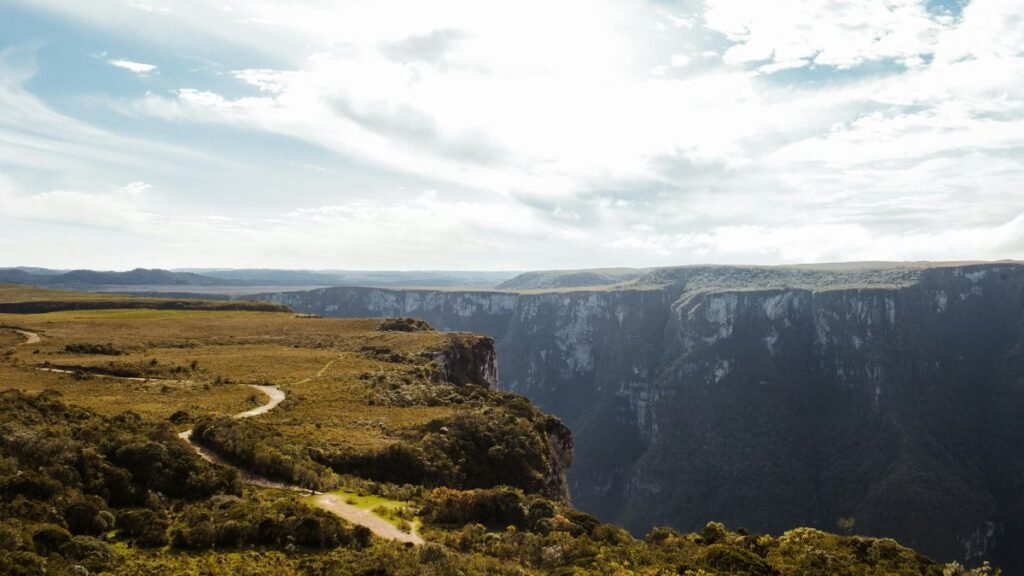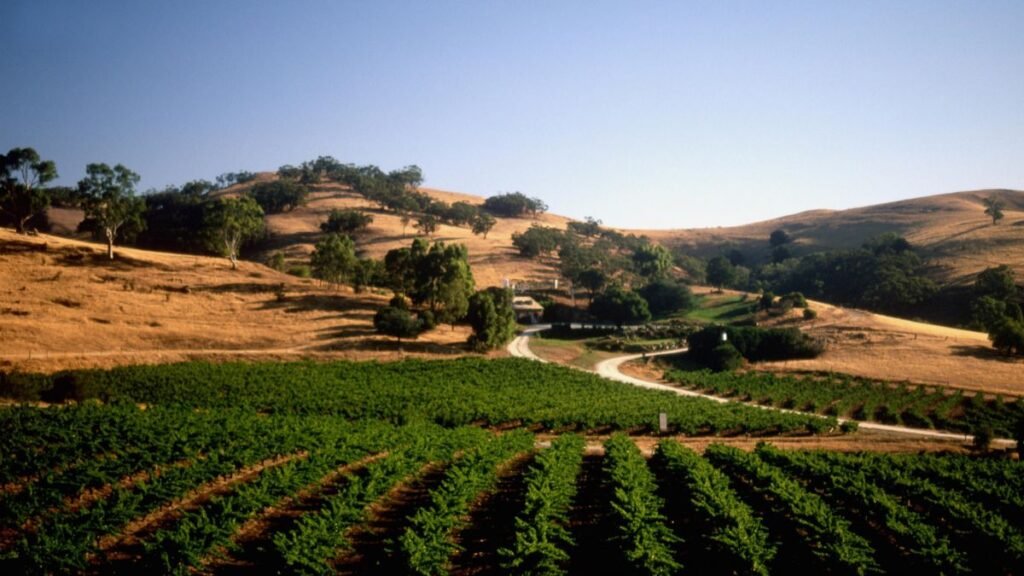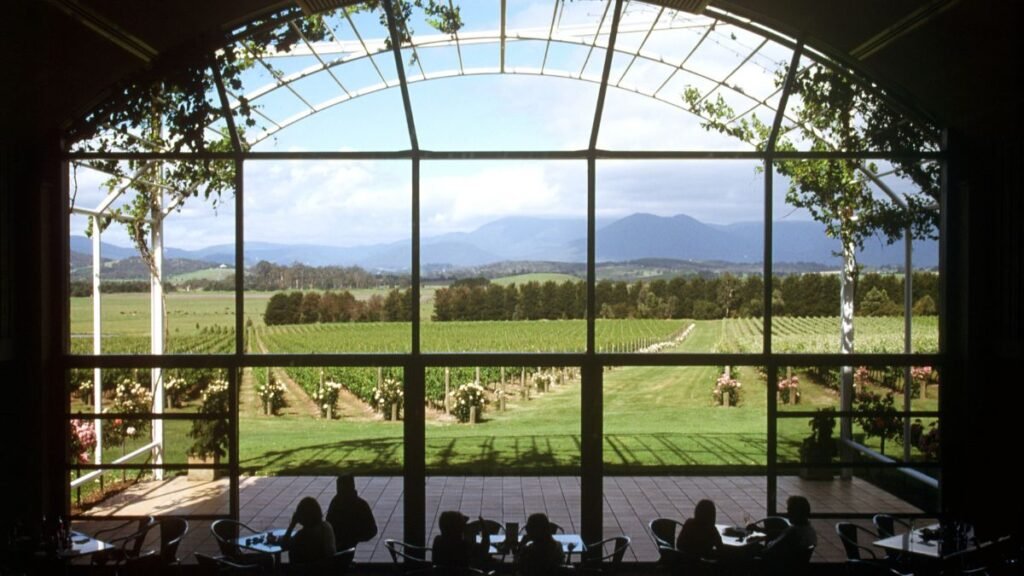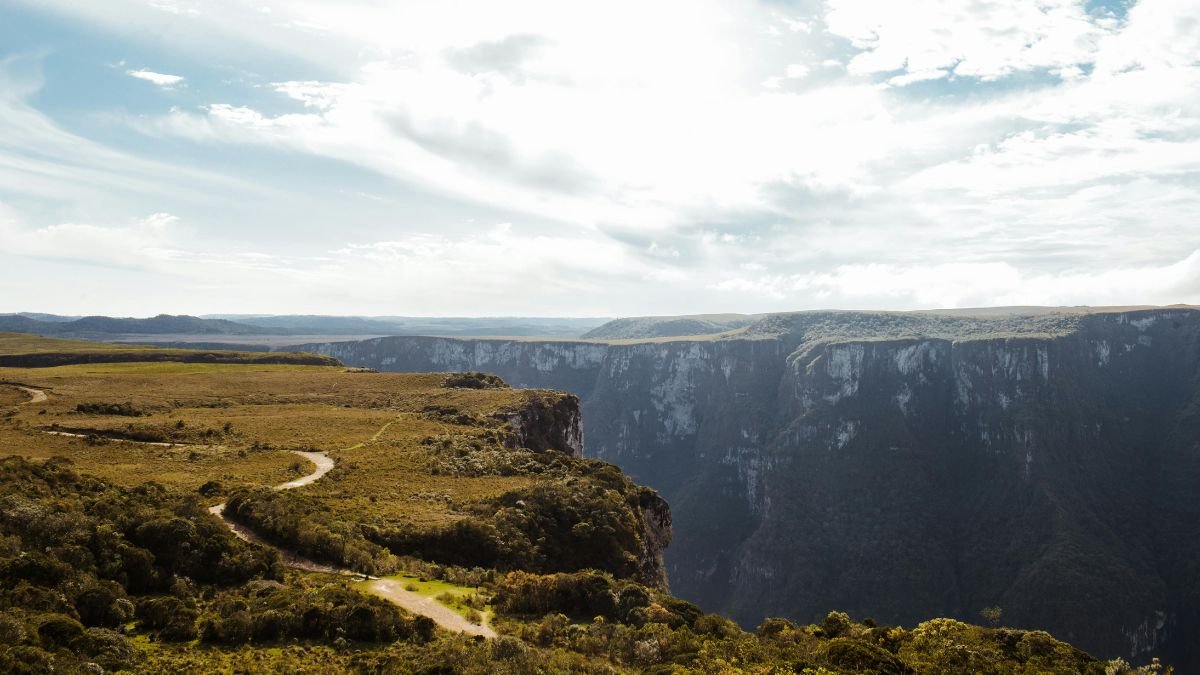Introduction
Have you ever wondered how a piece of Italy could thrive in South America? In Rio Grande RS, you can explore six charming towns that reflect Tuscany’s essence, bringing stunning landscapes and rich Italian heritage to Brazilian soil.
This region is not just known for its breathtaking views; it boasts a vibrant wine culture and culinary delights that make it a hidden gem among Tuscan-like towns. Join us as we take a closer look at what makes these communities a must-visit in the heart of Brazil’s renowned wine country.

Key Takeaways
- Discover the enchanting blend of Italian culture and Brazilian tradition in Rio Grande do Sul.
- Explore six towns that mirror the beauty and charm of Tuscany.
- Experience local wine production and its significance in the Brazilian wine country.
- Immerse yourself in the rich Italian heritage that influences these communities.
- Uncover the culinary delights that await in each Tuscany-like town.
- Learn about travel tips and recommendations for visiting this unique region.
Introduction to Rio Grande do Sul
Rio Grande do Sul stands out for its rich diversity, both in geography and culture. This Brazilian state features stunning scenic landscapes, encompassing everything from mountainous regions to rolling hills and expansive plains. Such geographical variety enhances the area’s uniqueness, making it a perfect backdrop for vibrant living.
The region has strong Italian and German influences, attributed to significant immigration waves in the late 19th century. These cultural roots are evident in the practices and customs that permeate everyday life. Traditional gaucho traditions, for instance, represent a deep-seated aspect of local Brazilian culture that contributes to an appealing blend of influences.
Festivals, frequently characterized by lively music and dance, celebrate these rich heritages. Local events showcase not only the vibrant Brazilian culture but also the Italian customs that have been integrated into the fabric of Rio Grande do Sul. This fascinating tapestry invites exploration and appreciation, making it an essential destination for cultural enthusiasts.
Understanding the Influence of Italian Immigration
Italian immigration to Brazil has left an indelible mark on the country’s cultural landscape, particularly in Rio Grande do Sul. This migration began in the 19th century, with many individuals from the Veneto and Trentino regions arriving to seek land and a better quality of life. The government played a crucial role in fostering this wave of immigration, providing incentives for settlers drawn by the promise of opportunity. The journey was fraught with challenges, but the determination of these early immigrants helped shape the future of their communities.
Historical Context of Italian Settlers
The history of Italian settlers in Brazil is a story of resilience and adaptation. Upon their arrival, many faced significant hardships, such as disease and food scarcity. These challenges were compounded by the task of integrating into a new land. Yet, the ability to recreate aspects of their homeland led to the establishment of a vibrant Italian presence within local communities. Their experiences not only highlight the struggles of adapting to unforeseen circumstances but also underscore the strength and tenacity that characterized the early Italian immigrants.
The Cultural Impact on Local Communities
The influence of Italian culture in Brazil has been profound, particularly in festivities and culinary traditions that have become integral to regional identity. This blending of traditions is evident in the annual events celebrated in honor of their heritage, where local foods such as pasta and polenta take center stage. Additionally, religious practices reflect a deep-seated commitment to their heritage, with community events often aligning with significant Italian holidays. Over generations, these elements of Italian culture have enriched the regional tapestry, creating a unique fusion that continues to thrive today.
Vale dos Vinhedos: The Heart of Wine Country
The Vale dos Vinhedos stands out as a premier destination in wine country, Brazil, captivating visitors with its picturesque scenery and rich viticultural heritage. Nestled in the Serra Gaúcha region, this valley is recognized as the largest and most prominent wine-producing area in Brazil, featuring over 30 wineries that offer an exquisite range of wines.
Overview of the Region
Vale dos Vinhedos, which translates to the “Valley of Vineyards,” envelops guests in a landscape reminiscent of Tuscany, characterized by rolling hills and abundant vineyards. The region has gained a reputation not only for its stunning views but also for the high quality of its wines.
Here, winemakers strike a balance between tradition and innovation, producing celebrated varieties such as Merlot, Tannat, and Chardonnay. Visitors to this enchanting area can explore vineyards, enjoy guided tours, and participate in tastings that highlight the artistry of Brazil’s winemaking.
Climate and Geography Influencing Wine Production
The wine production climate of Vale dos Vinhedos plays an integral role in shaping the character of its wines. A combination of the region’s altitude, southern latitude, and varied soil types creates ideal conditions for grape cultivation.
The sandy and clay-like soils contribute to excellent drainage and nutrient availability, fostering robust vine health. With a temperate climate featuring well-defined seasons, winemakers can produce a diverse array of wines that capture the essence of this remarkable locale.
Bento Gonçalves: A Town Rich in Italian Heritage
Bento Gonçalves stands out as a vibrant testament to the region’s Italian heritage. Located in the heart of Brazil’s wine country, the town offers visitors a unique blend of history, culture, and the celebration of communal traditions. Its rich cultural tapestry is woven through landmark sites and lively community gatherings.
The Chapel of Nossa Senhora das Neves
The Chapel of Nossa Senhora das Neves is a notable landmark in Bento Gonçalves, embodying the ingenuity and devotion of its founders. Constructed during a time of drought, this chapel exemplifies how the local Italian community channeled their determination into a creative solution, using wine as a building material. This distinctive aspect not only highlights the town’s wine production but also serves as a symbol of the community’s resilience and faith, deeply rooted in its Italian heritage.
Wine Culture and Community Festivals
Bento Gonçalves thrives on its vibrant wine culture, incorporating the region’s Italian heritage into its social fabric. The town hosts numerous community festivals throughout the year, celebrating both wine and the traditions of its Italian ancestors.
Events such as the Festa Nacional da Uva attract thousands, allowing locals and tourists to engage in wine tastings, culinary showcases, and cultural performances. These festivities foster strong communal bonds and reflect a shared passion for heritage, making Bento Gonçalves a must-visit for anyone looking to experience the heart of Italian culture in Brazil.
Garibaldi: The Sparkling Wine Capital
Garibaldi stands as a testament to Brazil’s burgeoning wine culture, particularly known for its exceptional sparkling wine production. Founded by Italian immigrants in 1900, the town boasts a rich history intertwined with its winemaking heritage, making it a focal point for enthusiasts of sparkling wine in Brazil.
Historical Significance of the Town
The establishment of Garibaldi under the influence of Italian settlers laid the foundation for its renowned status in the wine industry. Over the decades, Garibaldi has cultivated a reputation for producing some of Brazil’s finest sparkling wines, reflecting traditional European methods blended with local innovations.
The town’s historical context provides visitors with a glimpse into the evolution of Brazilian winemaking, characterized by dedication and craftsmanship.
Best Wineries to Visit in Garibaldi
The charm of Garibaldi is enhanced by several top-notch wineries that attract both local and international visitors. Among the best wineries, Vinícola Armando Peterlongo holds a prestigious place, famous for introducing the first Brazilian champagne.
Each winery presents an opportunity for guided tours, tastings, and a deep dive into the sparkling wine production process. Other notable wineries such as Casa Valduga and Vinícola Miolo further enhance the experience, showcasing the variety and quality that Garibaldi offers.
Monte Belo do Sul: A Hidden Gem
Monte Belo do Sul stands out among the hidden gems Brazil has to offer. This charming town, nestled in the wine region, invites visitors to explore its unique attractions and local experiences. Known for its small-town charm, Monte Belo do Sul provides an authentic atmosphere where tradition meets contemporary living, making it an ideal getaway.
Local Attractions and Dining Options
The town is filled with quaint shops showcasing local artisans, offering a glimpse into the area’s culture and craftsmanship. Dining in Monte Belo do Sul offers a delightful experience with options featuring Italian-inspired cuisine.
Visitors can savor traditional dishes made from locally sourced ingredients, showcasing the rich culinary heritage that has been passed down through generations. Restaurants often emphasize a farm-to-table approach, further enhancing the local dining scene.
Outdoor Activities Around Monte Belo do Sul
For those seeking adventure, numerous outdoor activities are available. Hiking trails around Monte Belo do Sul offer breathtaking views of the surrounding landscape, making them perfect for nature enthusiasts. The area is also home to art galleries, where visitors can appreciate the works of local artists. Engaging in these activities allows for a deeper connection with the region’s natural beauty and artistic spirit, enhancing any trip to this hidden gem.

Caxias do Sul: A Blend of Italian and Brazilian Culture
Caxias do Sul represents a unique fusion of Italian and Brazilian culture, evident in its striking landmarks and lively festivals. The town not only boasts a rich Italian heritage but also serves as a vital cultural hub in Brazil. Visitors and residents alike can enjoy a variety of historical sites that reflect the profound impact of Italian culture in Brazil.
Key Landmarks and Historical Sites
In Caxias do Sul, several landmarks highlight the town’s vibrant history. The Cathedral of Our Lady of Lourdes, with its inspiring architecture, stands as a significant symbol of the community’s roots. The Museu Ambiência Casa de Pedra showcases artifacts that represent the Italian settlers’ journey and their influence on local customs. These sites not only attract tourists but also instill a sense of pride among locals, celebrating their vibrant heritage.
Festivals Celebrating Italian Heritage
The town is renowned for hosting various festivals throughout the year that celebrate Italian culture in Brazil. The Festa da Uva is one of the most highly anticipated events, drawing thousands of visitors each year. This grape festival highlights the significance of winemaking traditions, featuring music, dance, and culinary delights from Italian cuisine. Such events foster a sense of community spirit and showcase the town’s commitment to preserving its unique cultural heritage.
Vineyard Tours: Immersive Wine Experiences
Vineyard tours Brazil provide an unparalleled opportunity to dive deep into the world of winemaking. In the stunning Vale dos Vinhedos, guests can participate in immersive winery visits that cover every aspect of the winemaking process. From grape harvesting to the bottling stage, these tours provide a detailed look at the process of creating high-quality Brazilian wines.
During these experiences, visitors are often treated to wine-tasting sessions paired with delicious local cuisine. These pairings accentuate the unique flavors of the wines, showcasing the craftsmanship and distinct characteristics that Brazilian vineyards have to offer. Many tours feature knowledgeable guides who share insights into the techniques and traditions that make the region’s wines exceptional.
Participating in vineyard tours allows guests to appreciate not only the final product but also the hard work and dedication required to bring these wines to life. Engaging with local vintners offers a personal touch, creating memorable interactions that enrich the experience of exploring Brazil’s wine country.
| Tour Features | Details |
|---|---|
| Tour Duration | Approximately 2 to 3 hours |
| Included Activities | Grape harvesting, wine tasting, food pairing |
| Guide Expertise | Local historians and winemakers |
| Geographic Focus | Vale dos Vinhedos region |
| Typical Group Size | 6 to 15 participants |
Engaging in vineyard tours enhances the understanding of Brazil’s diverse wine industry, offering not just a taste of incredible wines but a chance to forge connections with the local culture and its culinary traditions.
Indulging in Italian Cuisine: A Culinary Journey
Italian cuisine in Brazil captures the essence of rich flavors influenced by generations of Italian immigrants. The culinary offerings in Rio Grande do Sul are a testament to this influence, boasting a variety of must-try dishes that will delight food enthusiasts. Culinary exploration is incomplete without indulging in classic items like polenta, homemade pastas, and traditional desserts such as panettone. These dishes gain their charm from locally sourced ingredients, reflecting the region’s agricultural bounty.
Must-Try Dishes and Specialties
Visitors should not miss the following must-try dishes:
- Polenta: A comforting staple, often served with hearty sauces.
- Homemade Pastas: Authentic varieties are available in various shapes and flavors, paired with rich sauces.
- Panettone: This iconic sweet bread, typically enjoyed around holidays, showcases Italy’s love for baking.
- Espaguete ao Vinho: Pasta tossed with local wines, providing a unique twist on traditional recipes.
Recommended Restaurants in the Region
To experience these culinary delights, consider visiting some of the best regional restaurants that excel in Italian cuisine in Brazil. Here are a few top picks:
| Restaurant Name | Location | Cuisine Highlights |
|---|---|---|
| Casa di Italia | Bento Gonçalves | Homemade pasta and traditional desserts |
| Osteria del Vinho | Garibaldi | Locally sourced ingredients with wine pairings |
| Trattoria da Mama | Caxias do Sul | Classic Italian dishes in a family-friendly setting |
| Ristorante Pizzeria Delizia | Monte Belo do Sul | Authentic pizzas and regional specialties |
These regional restaurants highlight the best of Italian cuisine in Brazil, making them essential stops for any culinary journey through the region. Enjoy discovering the authentic flavors and local traditions that bring these must-try dishes to life.

Exploring Local Crafts and Artisans
Rio Grande do Sul stands out as a treasure trove of local crafts in Brazil, reflecting its rich cultural heritage. Artisans in Rio Grande do Sul draw on centuries of tradition while incorporating modern techniques to create unique and vibrant artworks.
Visitors can immerse themselves in the local culture by exploring various markets, where a wealth of handcrafted items is available. Pottery, textiles, and artisan foods represent just a few categories of the remarkable goods on display. These handmade products not only serve as beautiful souvenirs but also support the local economy and community.
Engaging with these artisans deepens the understanding of the region’s cultural heritage. Workshops and galleries abound, offering insights into the processes behind each craft. Visitors can interact with the makers, learning about their inspirations and the materials they use, which further enhances their travel experience.
| Type of Craft | Description | Notable Locations |
|---|---|---|
| Pottery | Woven fabrics featuring traditional patterns are perfect for clothing and home decor. | Gramado, Caxias do Sul |
| Textiles | Locally made cheeses, wines, and chocolates highlight regional flavors. | Nova Petrópolis, Bento Gonçalves |
| Artisan Foods | Locally made cheeses, wines, and chocolates highlighting regional flavors. | Vale dos Vinhedos, Garibaldi |
Each crafted item tells a story, connecting the past to the present and illustrating the vibrant culture that thrives in this region. By purchasing these local crafts, visitors take home not only a piece of art but also a story of the community and its traditions.
Outdoor Activities in Rio Grande do Sul
Rio Grande do Sul boasts a rich tapestry of outdoor activities, making it a haven for both adventure seekers and culture enthusiasts. The diverse landscape ranges from rolling hills to lush vineyards, providing an ideal backdrop for various pursuits such as hiking and cultural tours. Visitors can easily immerse themselves in nature while exploring the historical tapestry of the region.
Hiking Trails with Scenic Views
The hiking trails in Rio Grande do Sul offer stunning vistas that draw nature lovers and photography enthusiasts. Among the popular routes, tourists can discover paths that wind through vineyards, showcasing breathtaking landscapes and local wildlife.
Trails such as the Rota dos Vinhos provide a unique perspective of the surrounding areas, blending physical activity with awe-inspiring scenery. Additionally, guided tours often enhance the hiking experience, illuminating the local flora and fauna while also sharing captivating stories about the region’s heritage.
Cultural Tours and Experiences
Complementing the outdoor adventures, cultural tours in Rio Grande do Sul highlight the region’s rich Italian heritage. Travellers can engage with local artisans and participate in community festivals, enriching the outdoor activities Brazil offers.
These tours not only provide insight into the historical significance of the area but also foster a deeper appreciation for its traditions. Visitors who participate in these experiences will find themselves immersed in the vibrant culture that thrives in this southern Brazilian gem.
How to Get to Rio Grande RS
Traveling to Rio Grande do Sul can be an exciting adventure, as this region offers stunning landscapes and rich Italian influences. For those planning their journey, understanding the transportation options available is crucial for a smooth experience. After landing in Brazil, visitors typically find themselves in Porto Alegre, the state capital, which serves as the main gateway to the captivating towns and vineyards of the region.
Transportation Options
Several transportation options await travelers who wish to explore the beautiful towns within Rio Grande do Sul:
- Rental Cars: Driving a rental car provides flexibility and allows for spontaneous stops along the way. Major rental agencies are present at Porto Alegre Airport.
- Public Transportation: Buses connect Porto Alegre to many towns such as Bento Gonçalves and Garibaldi, offering an affordable way to explore the area. Timetables can be found at the main bus stations.
- Guided Tours: For a more tailored experience, consider joining guided tours that cover the highlights of Rio Grande do Sul, including wine tastings and cultural sites.
Planning Your Travel Itinerary
Creating a travel itinerary ensures you see the best of what Rio Grande do Sul has to offer. Start by allocating days for each town based on your interests:
| Town | Highlights | Suggested Days |
|---|---|---|
| Bento Gonçalves | Wine Culture, Nossa Senhora das Neves Chapel | 2 Days |
| Garibaldi | Sparkling Wineries, Festivals | 1 Day |
| Caxias do Sul | Historic Landmarks, Cultural Events | 1-2 Days |
| Monte Belo do Sul | Outdoor Activities, Local Dining | 1 Day |
This travel itinerary allows for a comprehensive experience of the cultural richness and breathtaking scenery that define the wine region of Rio Grande do Sul. Start planning to ensure a memorable journey.
Travel Tips for Visiting Rio Grande RS
Visiting Rio Grande do Sul offers a rich cultural experience, making travel tips for Brazil essential for a memorable trip. Consider planning your visit around the best times to visit to enjoy the diverse activities and pleasant weather. Travelers may find useful insights on local customs and language to facilitate smoother communication with residents.
Best Times to Visit
The ideal time to explore Rio Grande do Sul varies from individual to individual. The summer months, from June to August, bring vibrant festivals and warm weather. Autumn, from September to November, showcases beautiful foliage and is perfect for wine lovers, as several wine festivals occur. The winter months, June to August, may present chilly conditions, but they are also a great opportunity to enjoy local cuisine in cozy establishments.
Language and Cultural Etiquette
Portuguese is the predominant language spoken in the region. Learning a few basic phrases can significantly enhance your experience. Greeting locals and showing appreciation through simple expressions such as “obrigado” (thank you) can leave a positive impression.
Understanding cultural etiquette is crucial; for instance, sharing a meal often involves an invitation to engage in lively discussions and share personal stories. Engaging in this way fosters deeper connections and enriches your travel experience.
Local Experiences that Capture the Essence of Tuscany
Visitors to Rio Grande do Sul can find a slice of Tuscany through the local experiences Brazil offers, immersing themselves in vibrant community celebrations. Engaging with the local culture during festivals allows travelers to appreciate the rich heritage and traditions that define this region.
Community Events and Celebrations
Rio Grande do Sul is home to various community celebrations that echo the vibrancy of Italian traditions. Events like the Festa da Uva in Caxias do Sul showcase the region’s pride in wine production and Italian culture. These festivals not only showcase local cuisine but also feature music, dance, and handicrafts that reflect the area’s rich heritage. Participating in such gatherings provides a unique opportunity to witness the joy and camaraderie that characterize local life.
Interacting with the Locals
One of the most enriching aspects of visiting this area is interacting with locals. Farmers, vintners, and artisans are often eager to share their stories and traditions. This kind of engagement can transform a standard trip into an unforgettable journey by fostering genuine connections. Whether sharing a meal with a family or joining in on a traditional dance, these interactions capture the essence of community and create lasting memories.
Conclusion
Rio Grande do Sul stands out as a captivating destination, blending the rich heritage of Italian immigrants with Brazil’s vibrant culture. As we explored the various towns reminiscent of Tuscany, it became evident that this region is a treasure trove of history, wine, and culinary delights. Each locale, from Bento Gonçalves to Garibaldi, showcases the Italian traditions that continue to thrive amidst breathtaking landscapes.
In this travel summary, we highlight how exploring Brazilian Italy offers a distinct experience, inviting visitors to indulge in authentic cuisine, participate in local celebrations, and experience the warm hospitality of the residents. The picturesque vineyards and charming streets create a perfect backdrop for those seeking to immerse themselves in a unique cultural journey.
As you plan your trip to Rio Grande RS, remember that this region encompasses not just beautiful scenery but also a heartfelt connection to the Italian spirit. With its captivating allure, engaging landscapes, and deep-rooted traditions, it beckons travelers to discover its enchanting charm and create unforgettable memories. Learn more Brazil Europe.
FAQ
What is the best time to visit Rio Grande do Sul?
The ideal time to visit Rio Grande do Sul is during the spring (September to November) and fall (March to May) when the weather is mild, making it perfect for exploring the vineyards and participating in local festivals.
How can I get to the towns in Rio Grande do Sul?
Visitors typically fly into Porto Alegre, the capital city, and then rent a car or use public transportation to reach the towns. Guided tours are also available for a more convenient travel experience.
Are there wine tastings available in the Vale dos Vinhedos?
Yes, the Vale dos Vinhedos is home to many wineries that offer wine tastings, vineyard tours, and exclusive experiences featuring local gourmet food pairings alongside their exquisite wines.
What types of cuisine can I expect in Rio Grande do Sul?
The culinary landscape features a rich assortment of Italian-inspired dishes, including homemade pasta, polenta, and desserts such as panettone. The region is also renowned for its exceptional meats and local wines, which enhance the dining experience.
What cultural festivals should I attend while in the region?
Notable festivals include the Festa da Uva in Caxias do Sul and wine festivals in Bento Gonçalves and Garibaldi, which showcase Italian traditions through music, dance, food, and wine tastings.
Can I participate in outdoor activities while visiting?
Absolutely! The diverse geography offers a range of outdoor activities, including hiking, biking, and ecotourism. Popular trails provide stunning views of the vineyards and hills, along with opportunities for cultural tours.
What local crafts can I find in the region?
Visitors can discover a variety of handmade goods from local artisans, including pottery, textiles, and artisan foods. Exploring local markets and workshops offers authentic cultural insights and supports the community’s artistic expression.
How important is Italian heritage to the region’s identity?
Italian culture is deeply woven into the fabric of Rio Grande do Sul’s identity, influencing language, cuisine, festivals, and community life, reflecting the legacy of the immigrants who settled there in the late 19th century.




